Until very recently, the idea of Intent-Based Networking (IBN) always felt slightly out of reach. I wrote about IBN back in 2017, mostly in the context of automating network operations, but at that time AI adoption inside networks was very limited. Only a few Tier-1 operators and Tier-1 vendors were experimenting with it, and even those deployments were small.
Today, in 2025, we’re in a very different era—an era where AI progresses month by month, moving faster than the industry can fully digest. Earlier this year, Jensen Huang said 2025 belongs to Agentic AI, and I completely agree. So far, GenAI and Agentic AI have made the most noise in conversational AI and predictive AI use cases. But the question that kept me thinking was: When will AI truly disrupt network operations?
Now we finally have a clear answer.
A new report from Omdia highlights a major shift.
41% of CSPs believe Agentic AI will drive autonomous network operations.
This is the shift we’ve been waiting for—not AI at the customer layer, but AI acting directly at the network layer. And leading telecom technology vendors—Amdocs, Ericsson, Huawei, Nokia, Salesforce, ServiceNow—are already embedding Agentic AI into their platforms, which shows how real this momentum is.

Omdia also raises two important points that CSPs must keep in mind as they advance toward this new future:
- Stay cautiously optimistic: Start with low-risk use cases and ensure strong observability, explainability, and governance frameworks in early Agentic AI deployments.
- Interoperability is coming: Multi-agent collaboration and new emerging protocols like MCP and A2A are paving the way for scalable, interoperable ecosystems that connect vendors, platforms, and network components more seamlessly across the telecom landscape.
But the real reason I am writing this article is to highlight how AI—especially Agentic AI—makes Intent-Based Networking actually achievable.
Earlier this year, Ericsson engineers published an excellent blog describing the concept of “Talk to Network” and its connection to Agentic AI. They captured the idea beautifully. Imagine a CSP simply asking:
- “What’s going on in the network?”
- “What needs fixing?”
And instead of dashboards and scripts, the system itself analyzes conditions, identifies patterns, and responds with a clear, coherent explanation. Not just data—but a narrative. And when asked what needs fixing, the system automatically prioritizes issues based on impact, urgency, and context, giving the operator everything required to make an informed decision.
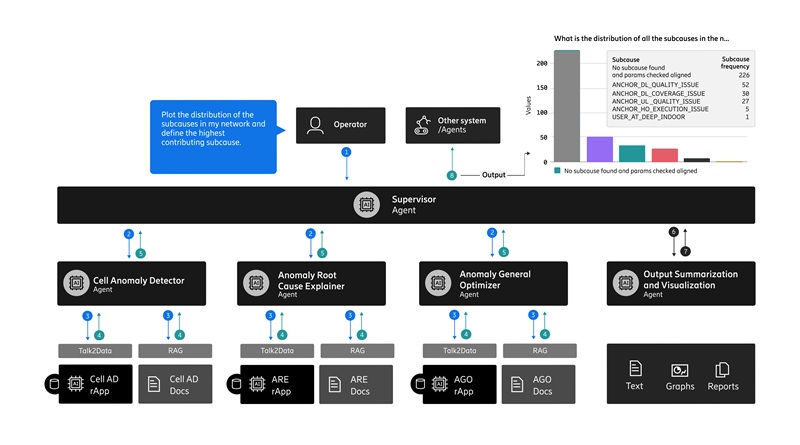
Ericsson also described an Agentic AI architecture behind this capability. Multiple agents work together, continuously exchanging information with a supervisor agent. They coordinate analysis, validate results, and deliver consistent recommendations. Finally, an Output Summarization and Visualization agent compiles everything into a detailed response—explanations, visuals, insights, and actionable steps.
This is how networks begin to “talk back” and understand intent.
At ACL Digital, we’ve worked with Tier-1 operators on similar ideas. In one project, we implemented intent-based service deployment on top of a cloud-native MEC platform. In these environments—where multiple edge locations and co-located services need to be deployed, managed, and scaled—the intent-driven model becomes extremely powerful. It abstracts complexity and allows the operator to focus on “what” they want instead of “how” to configure it.
Back when I wrote about Agentic AI earlier, I expected it to eventually disrupt telecom networks. But now, it’s visible, measurable, and real. The ecosystem is aligning. The architectures are emerging. And the early use cases are already in production.
Most importantly, we’ve reached a point where we can finally “talk to the network” and let the network handle the rest.
The future we imagined years ago isn’t theoretical anymore. It’s here—and it’s evolving faster than ever.
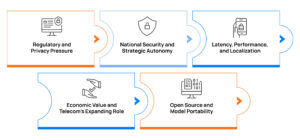
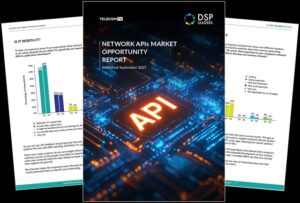

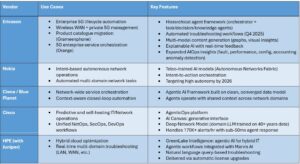
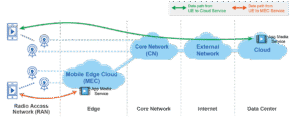
Be First to Comment